2022 Toyota Sienta Hybrid review: Little-league MVP

SINGAPORE - Toyota’s new Sienta Hybrid flips the table on its official history, but stands taller by doing so. It’s an efficient hybrid that packs the best bits of a full-sized MPV in a package that’s very right-sized for Singapore, which is why you could well be looking at the affordable MPV MVP for the current era.
This Sienta small MPV has always been popular here as our review of the second-gen model from 2016 shows, but in officially-imported terms, this is the first time we’re seeing the hybrid.
With Toyota’s product offerings increasingly on-point for Singapore, and offering a full-range of hybrids to mainstream sedans, big sedans, and even whacking great MPVs. As dealer Borneo Motors claims, it’s the only hybrid MPV in this segment that’s eligible for the cheaper Category A COE, and with a VES A2 band (-$15k) the price shrinks even further.
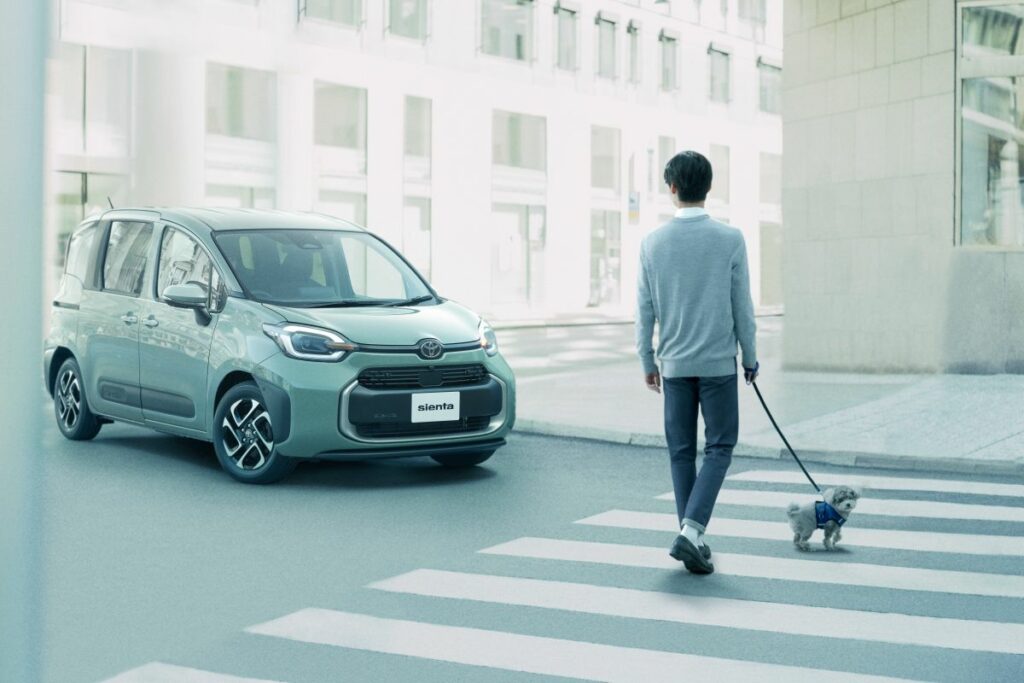
As covered in our launch story, there are two models on sale here: The base Standard and the more expensive Elegance, which also comes with optional two-tone paint for $2,000 more. The Standard model is undergoing homologation now, and has no price yet, but if you check CarBuyer’s Marketplace it will have the most current info. We expect it to be around $10k cheaper than the Elegance model.
With this being the all-new third-gen model, with TNGA underpinnings, a revised hybrid powertrain, so we’re expecting great things of it – could it offer Most Value (To The) Payer?
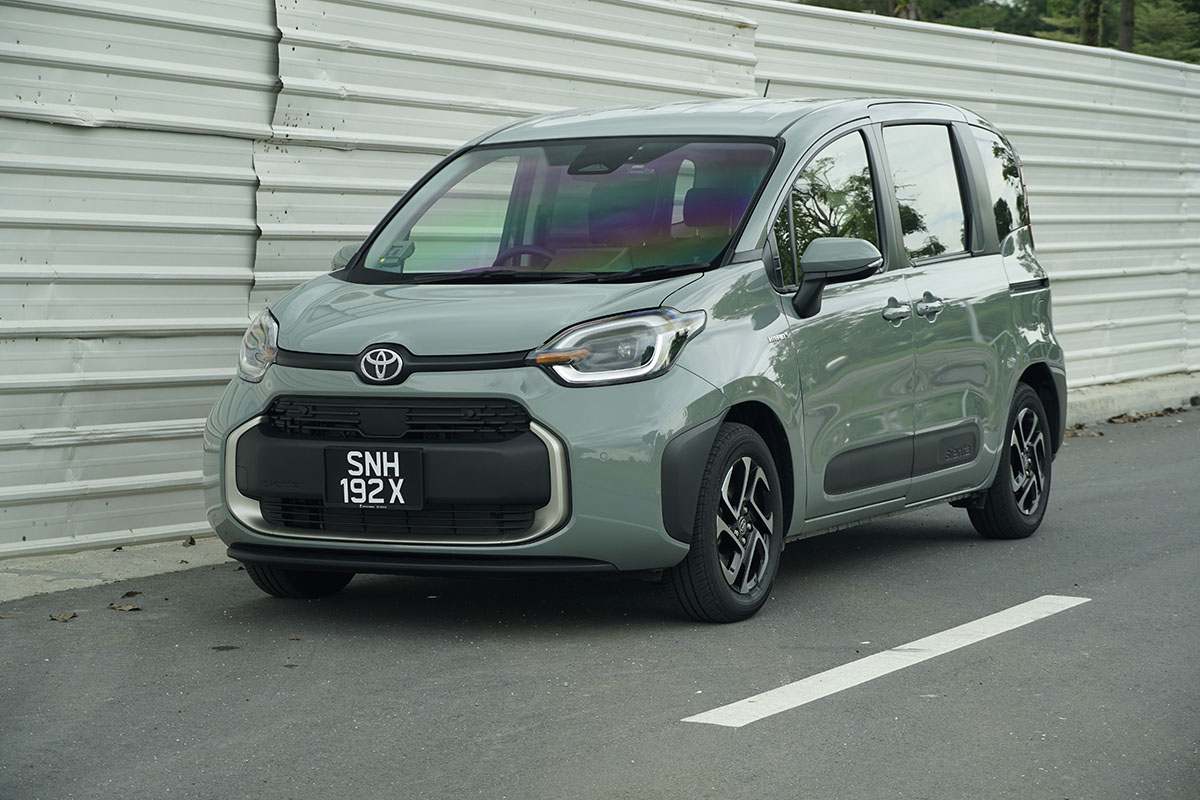
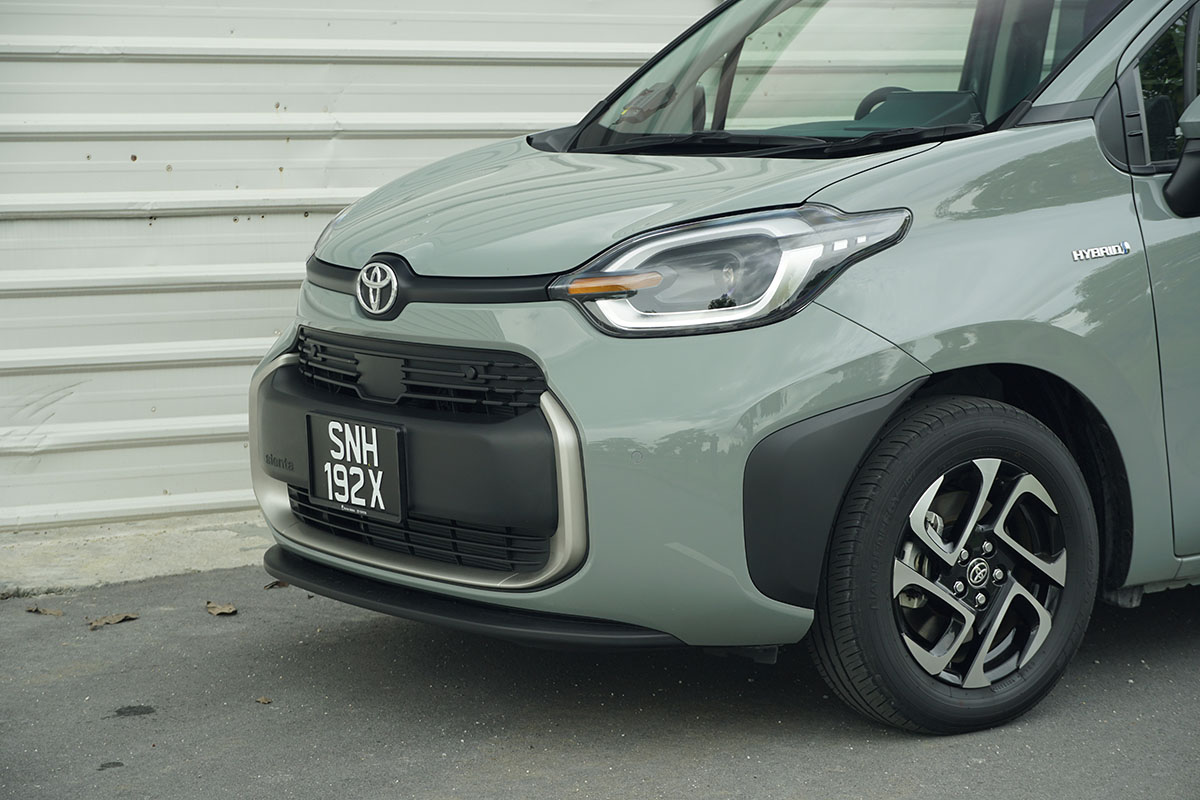
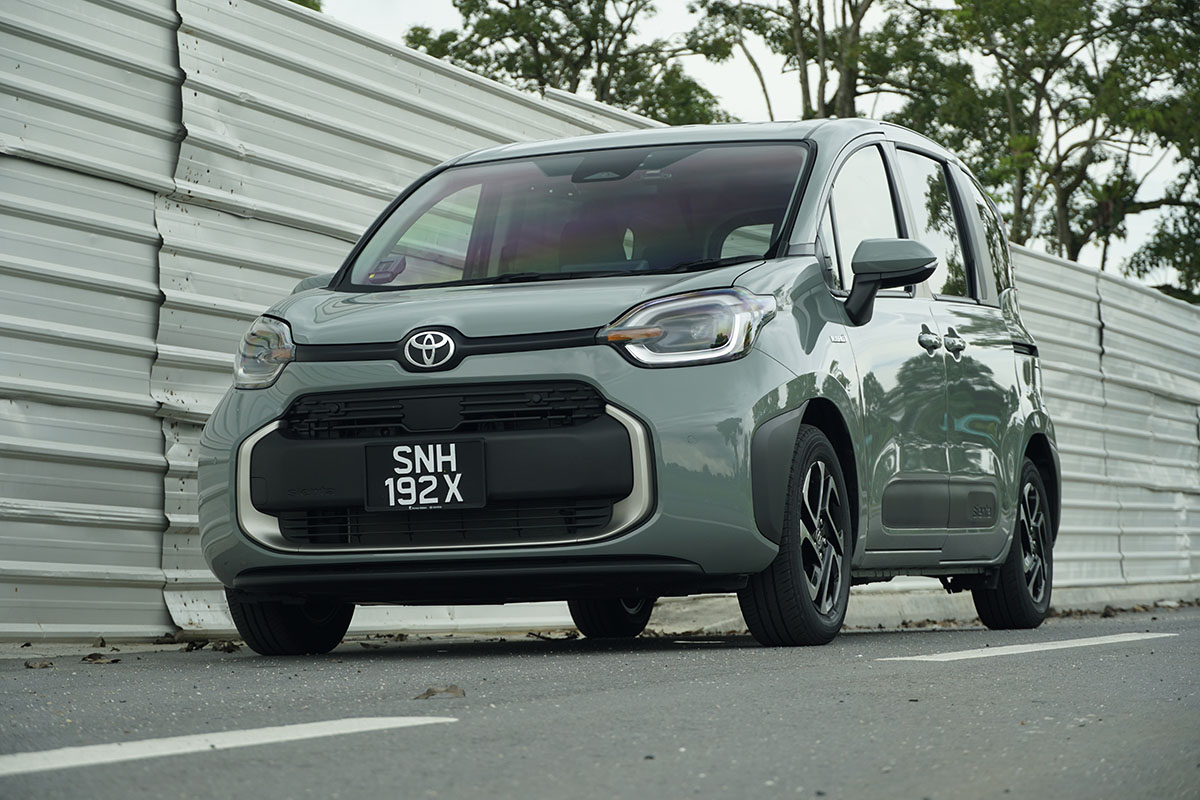
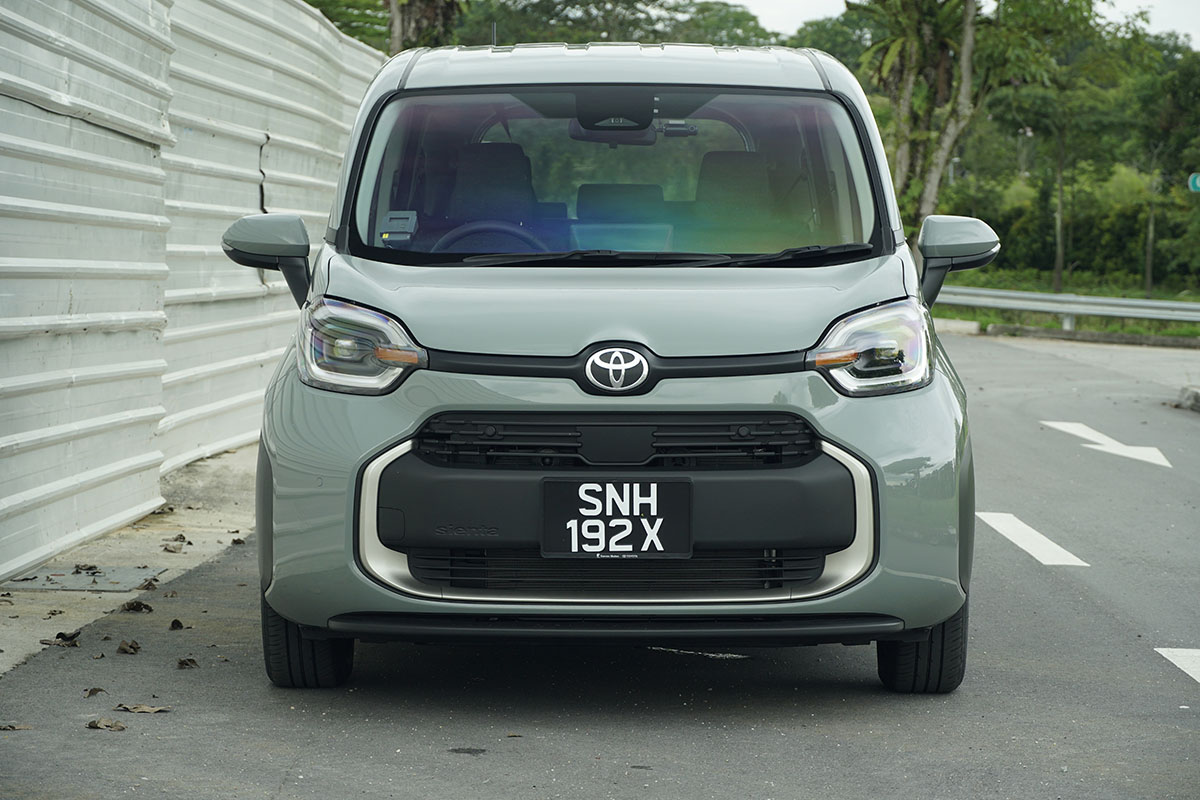
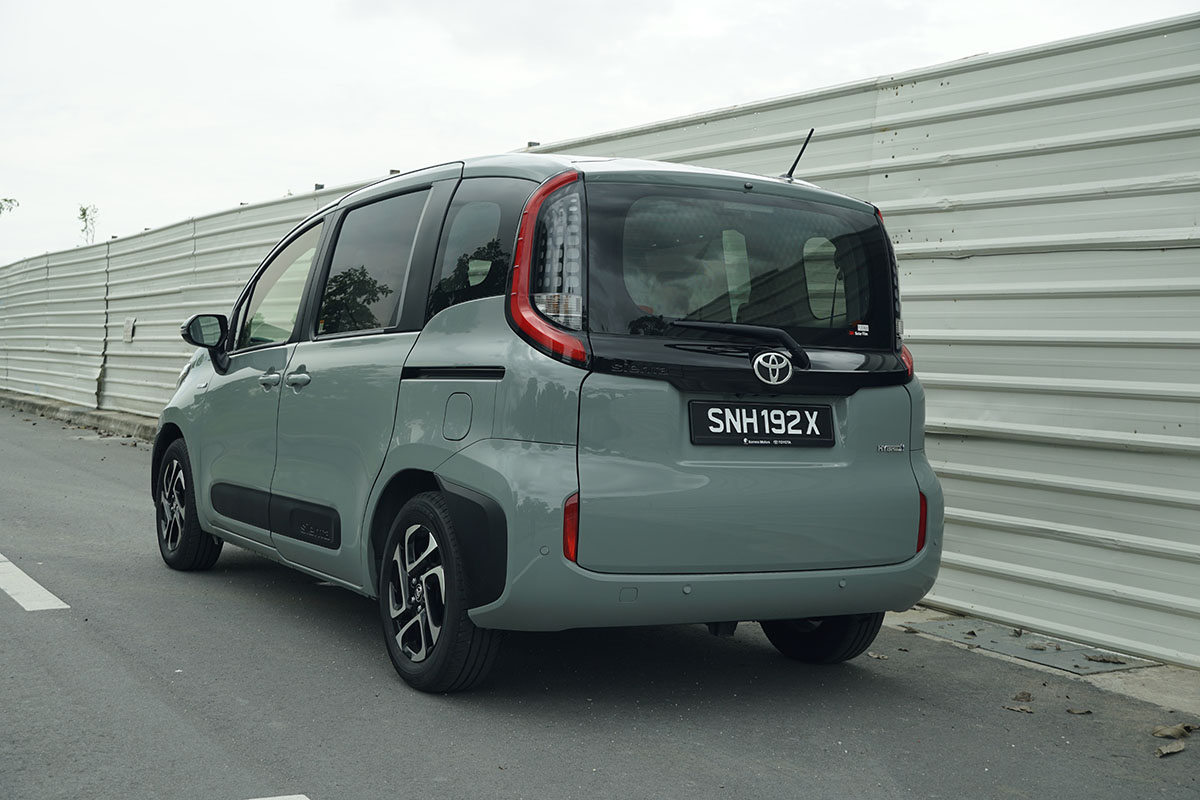
Electrified vehicles are your friend, or so Japanese carmakers want you to think. The Honda Jazz and Suzuki Ignis (one a full hybrid, the other mild) are birthed from this design school, and it seems Toyota opted for a similar tack with the third-gen Sienta.
Observers we straw-polled during our time with the car came to a toss-up between it being boxy and van-like and friendly-looking, while the flat-gray paintjob was hailed as ‘fashionable’ (again, see the Honda and Suzuki for examples).
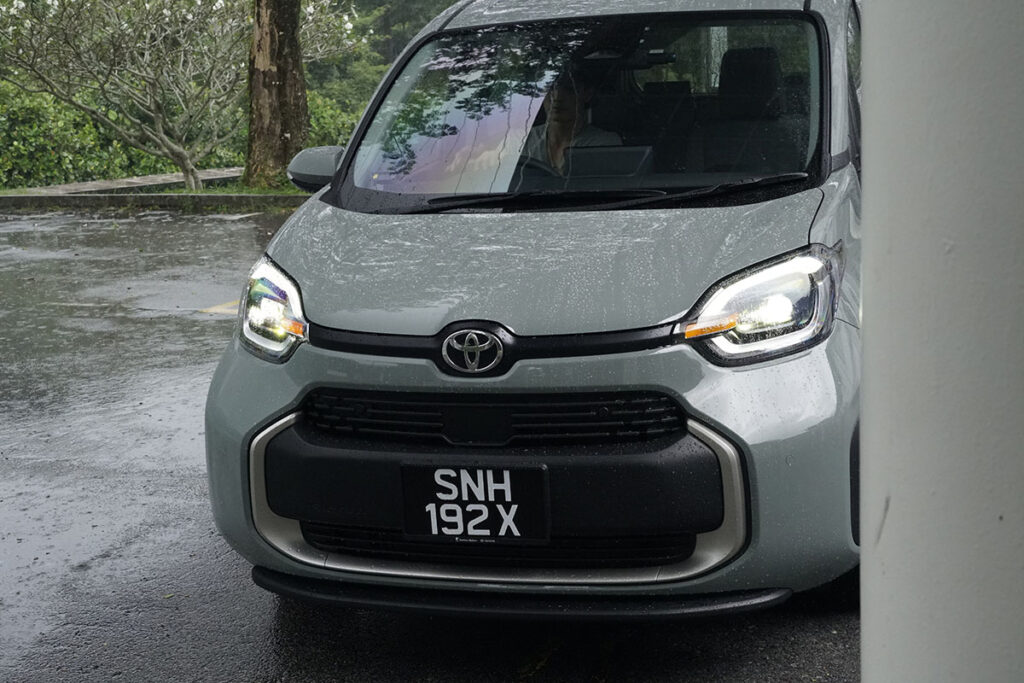
The vibe we’re getting is ‘friendly robot helper’, but we’re pleased with the way the new car looks. That’s because the previous car tried to hide its boxiness and van-ness, but this one embraces it, and differentiates itself enough for casual viewers to know it’s not a commercial vehicle. There’s also a far greater visual ancestry with the OG, the first-gen Sienta, in the round headlights and tall taillights.
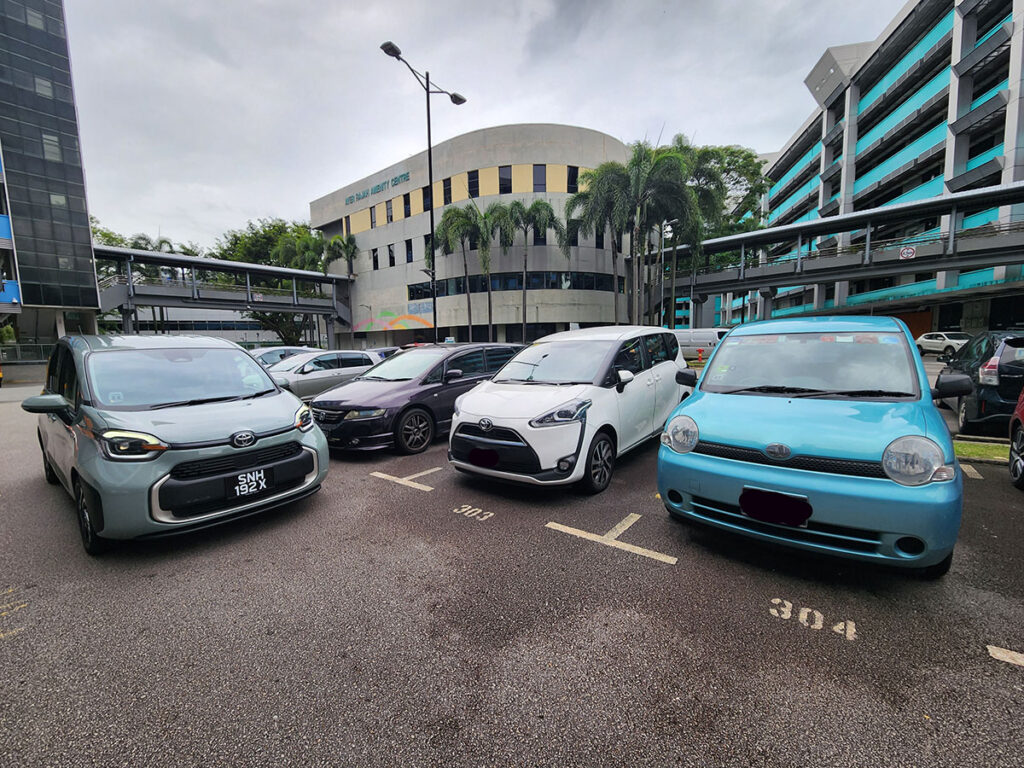
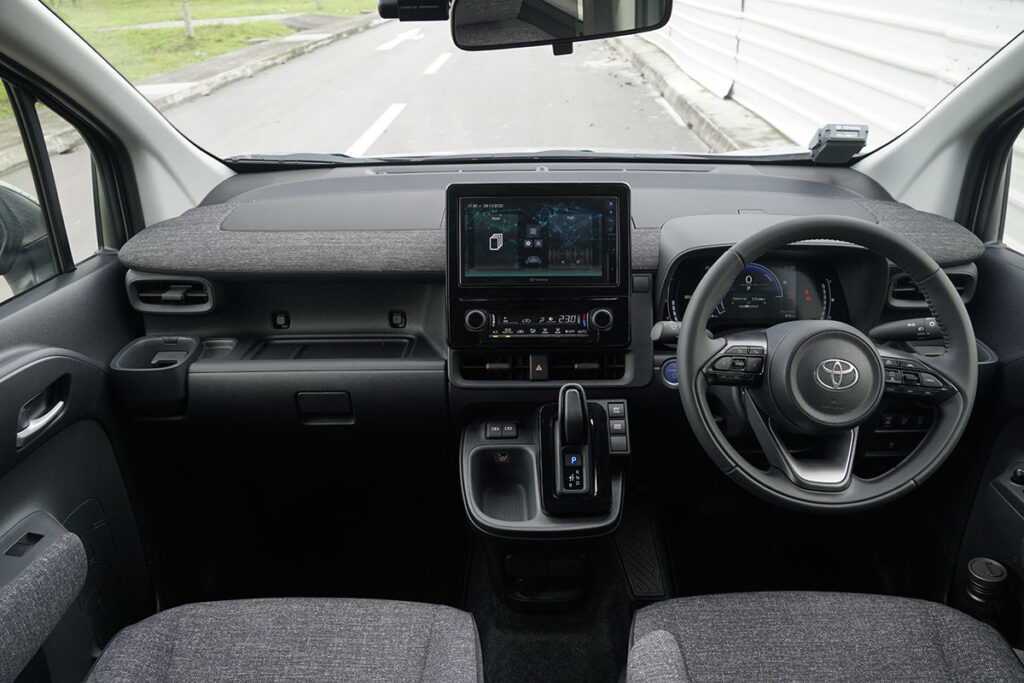
The Sienta’s cockpit has an almost lounge-like feel now, thanks to a new gray fabric upholstery that Toyota claims is water/oil/odour resistant – very useful considering the chaotic aspects of children.
Toyota has also taken a step up in the digital realm, with a 7.0-inch driver’s display and particularly the 9.0-inch infotainment system which is wireless Android Auto/Apple CarPlay capable. It’s far clearer and more legible in daylight than Toyota’s preceding touchscreens, and brings it on par with the Koreans.
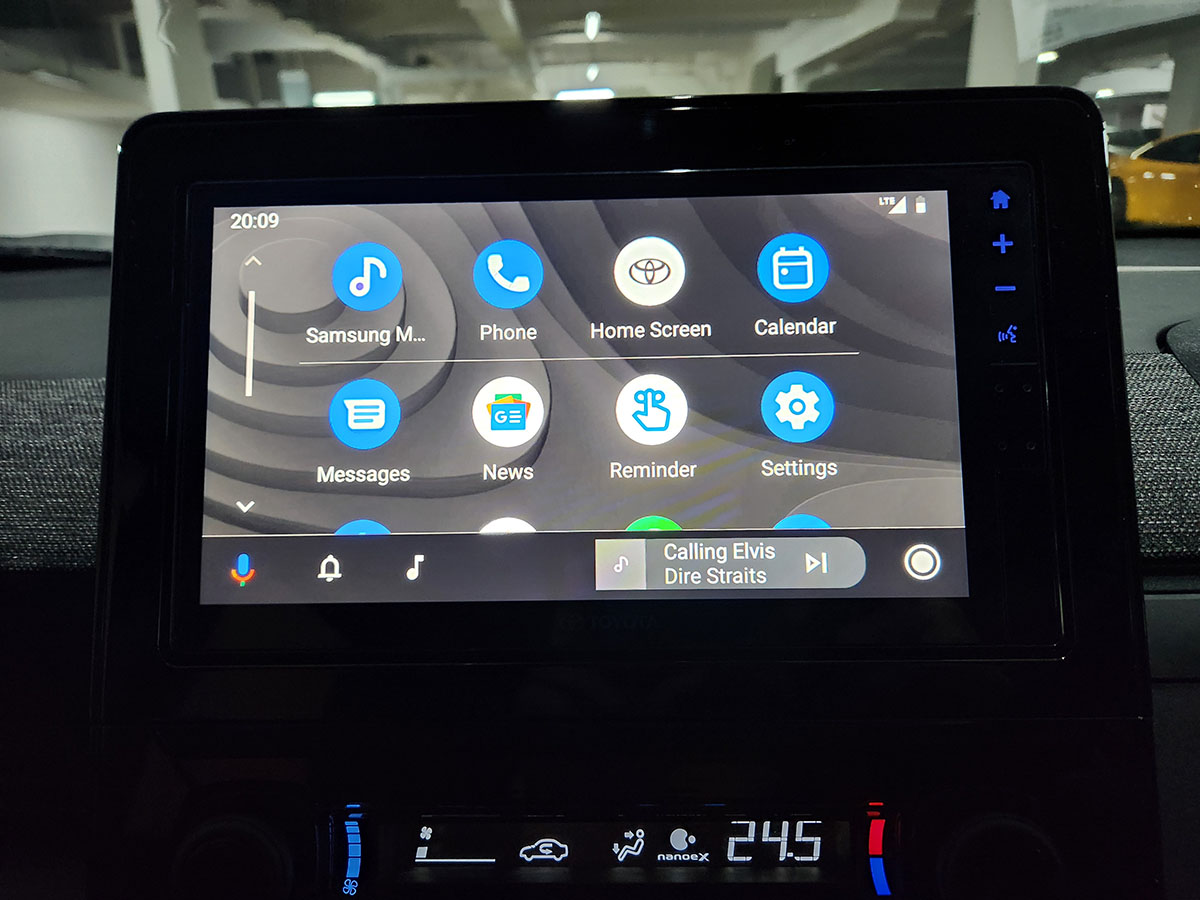
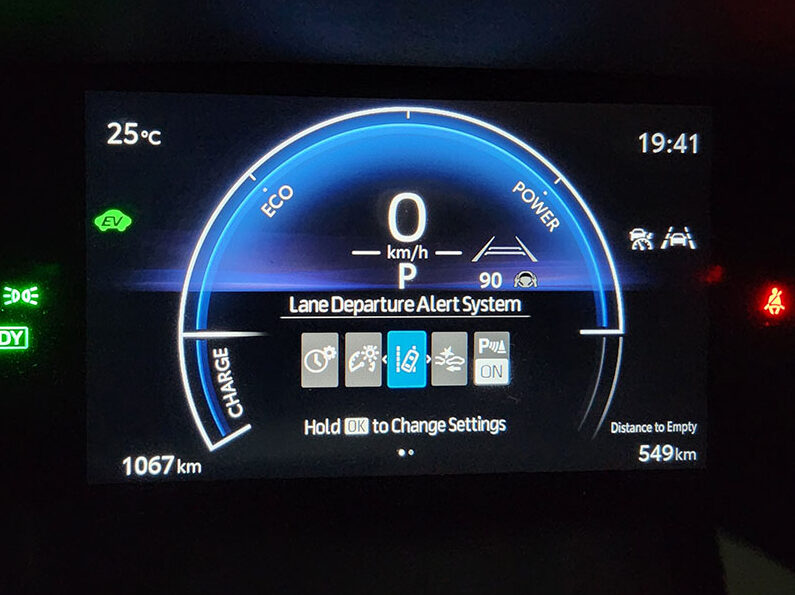
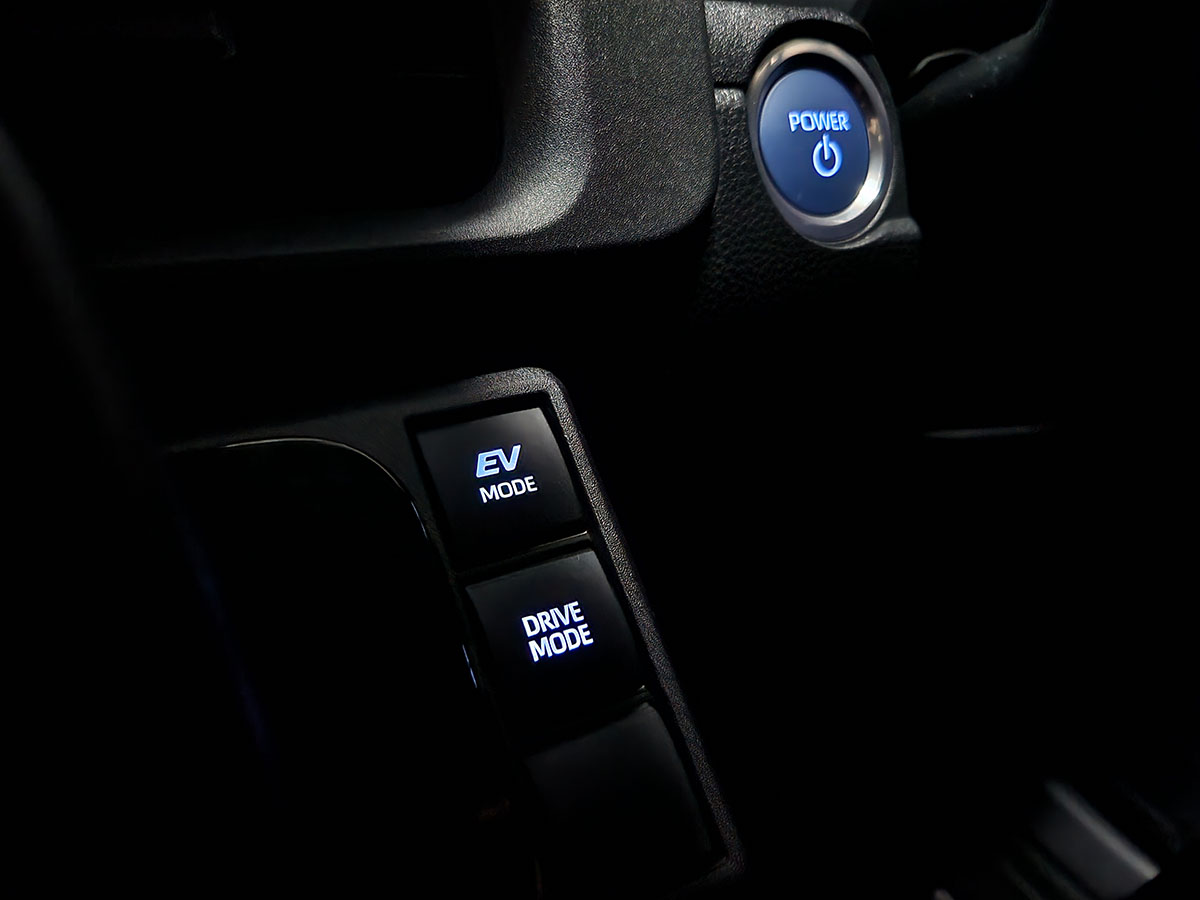
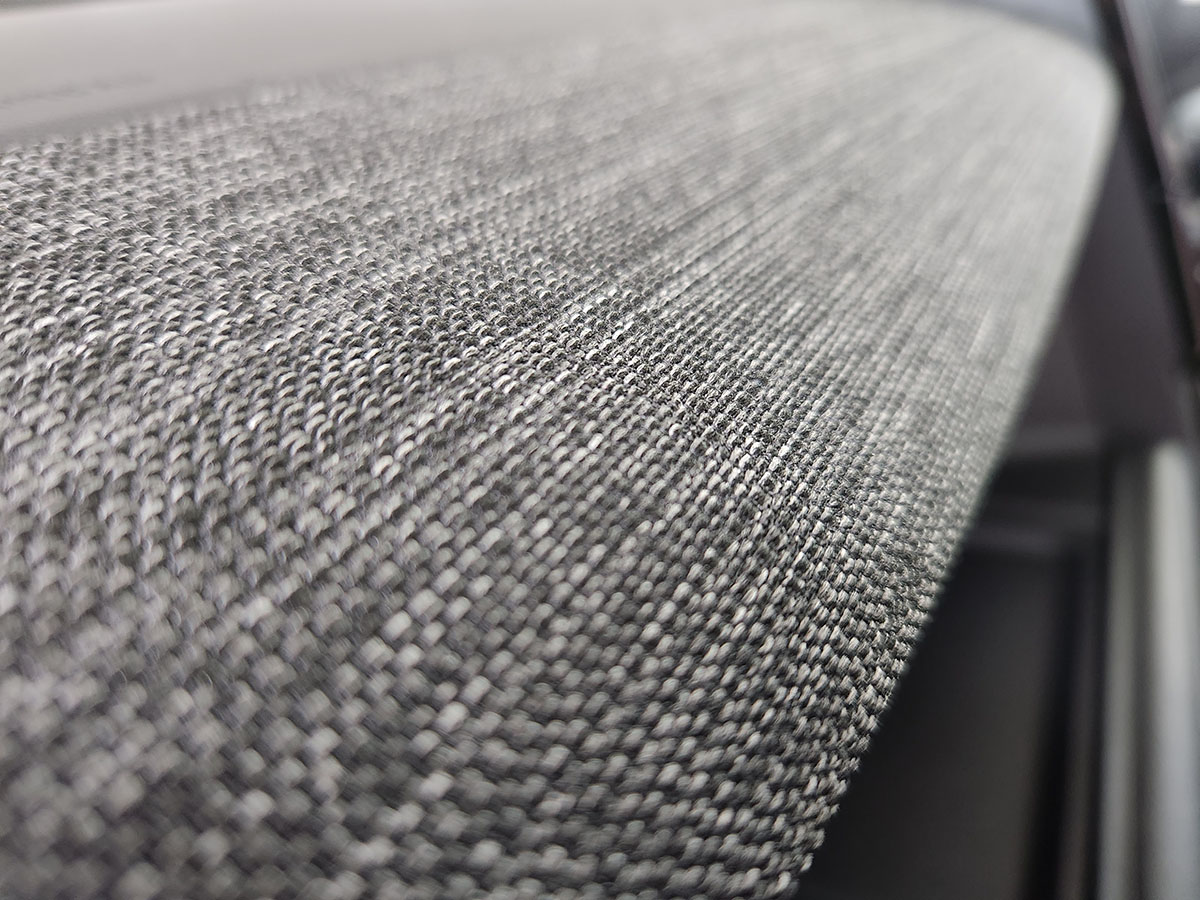
With the Sienta’s mainstream positioning, it’s a pleasant surprise that the Sienta comes with a very robust safety loadout, the highlights being six airbags and active safety via Toyota Safety System (TSS), which has the expected gamut of systems like active cruise control, AEB, lane keeping, and more.
@carbuyersingapore A quick look at the Cat A MPV Sienta Hybrid 🚙 @Toyota #sientahybrid ♬ Big Energy - Latto
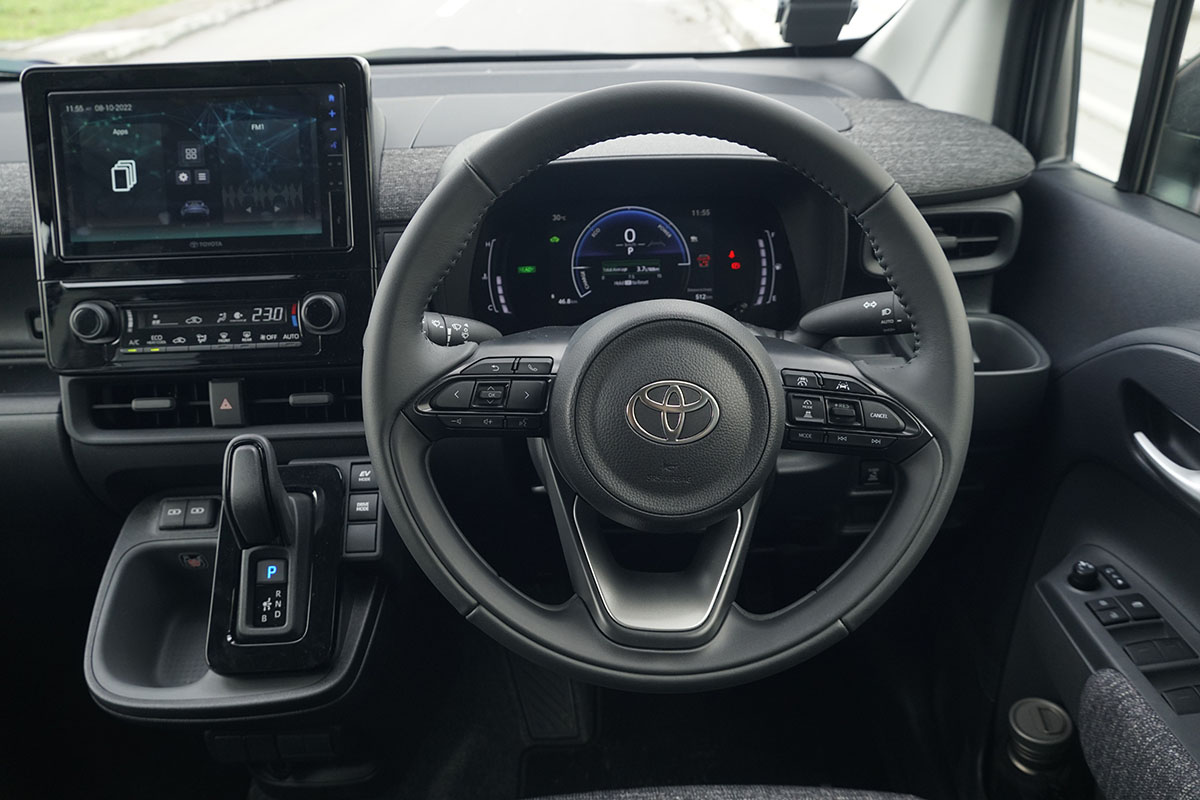
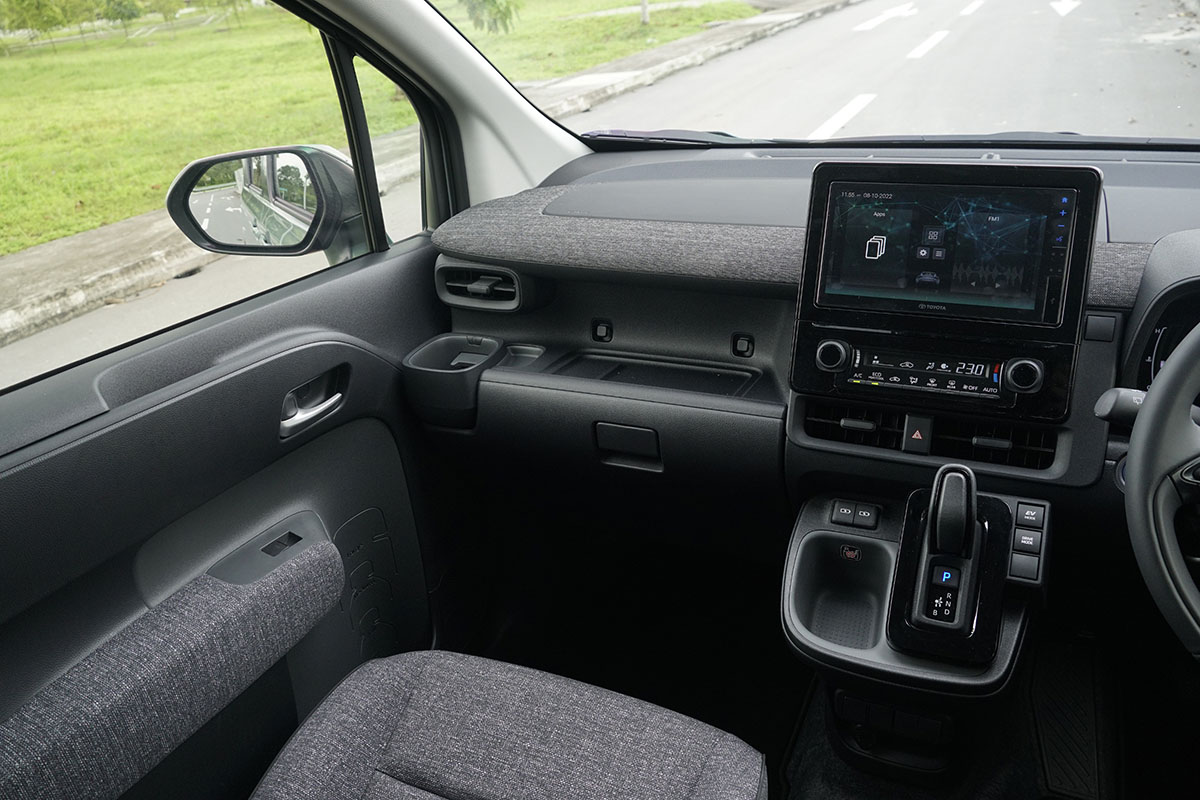
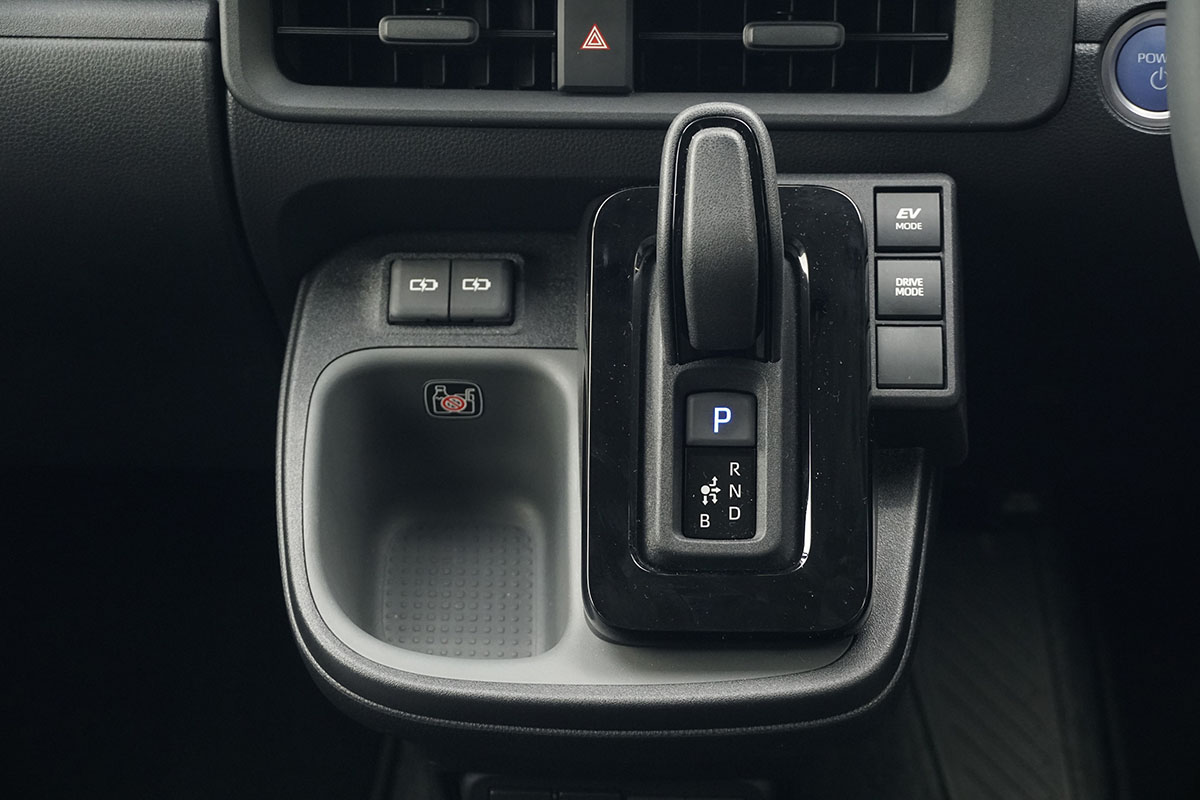
Overall, the Sienta’s extant airy, tall cabin feel has been bolstered by a truly useful feature set, and less obvious hard plastics, which raise the tone of the cabin. There’s more space up front thanks to the shift-by-wire system, as it leaves an open space to stow a bag, or to give you access to the second row directly, by foot and a little contortion. Which leads us to the next section…
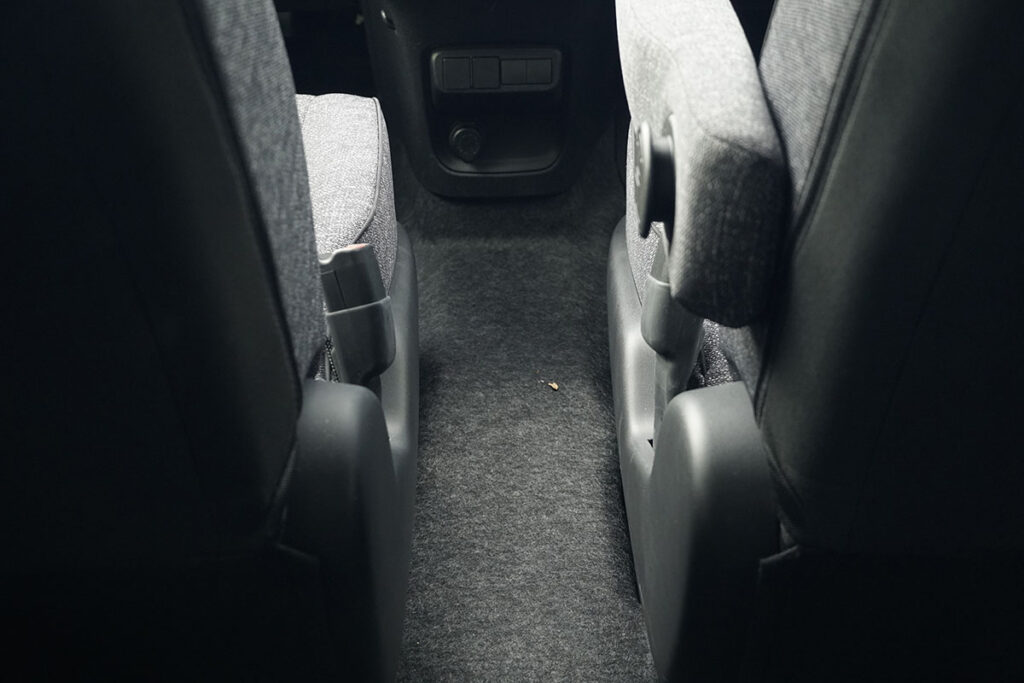
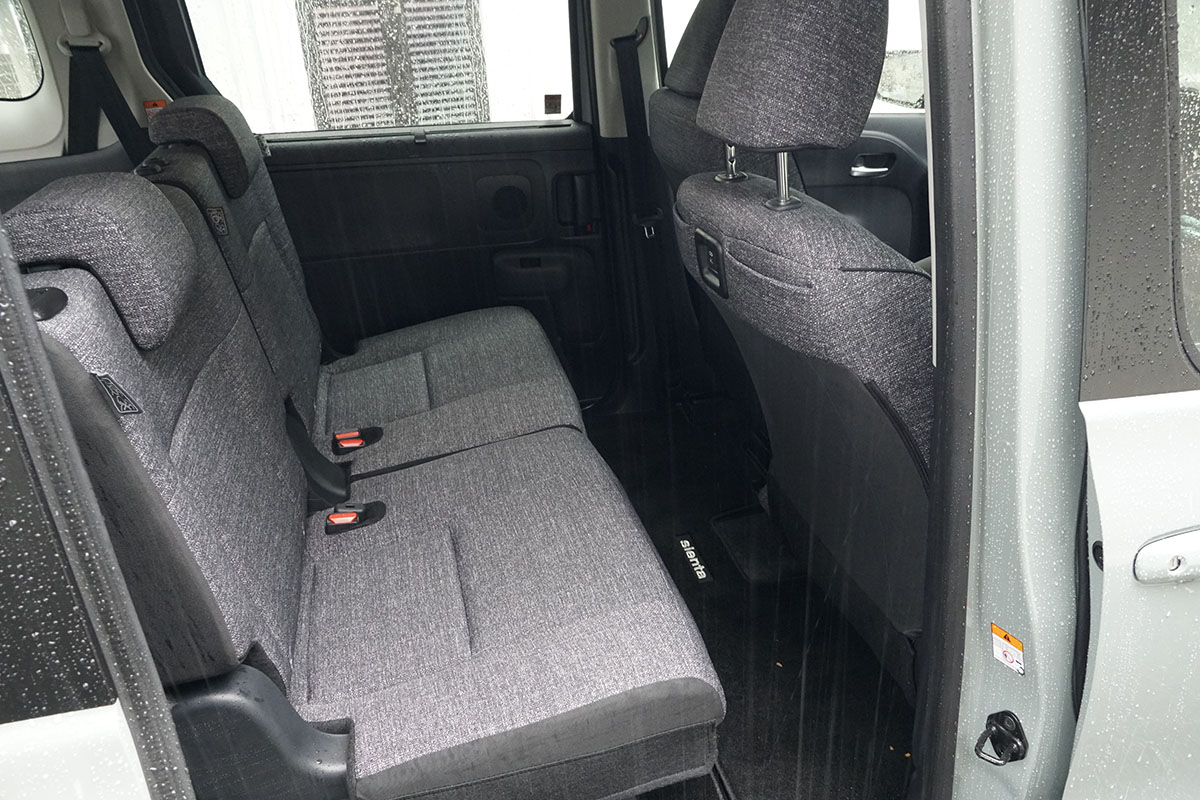
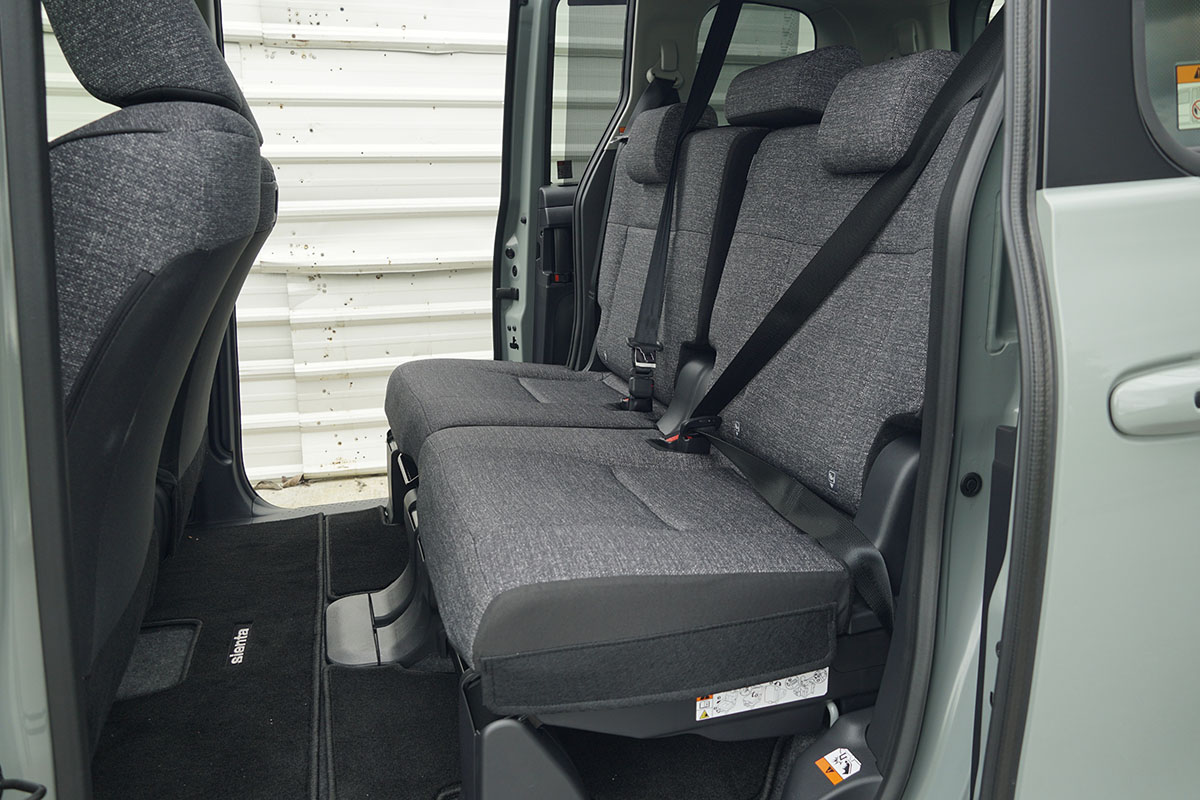
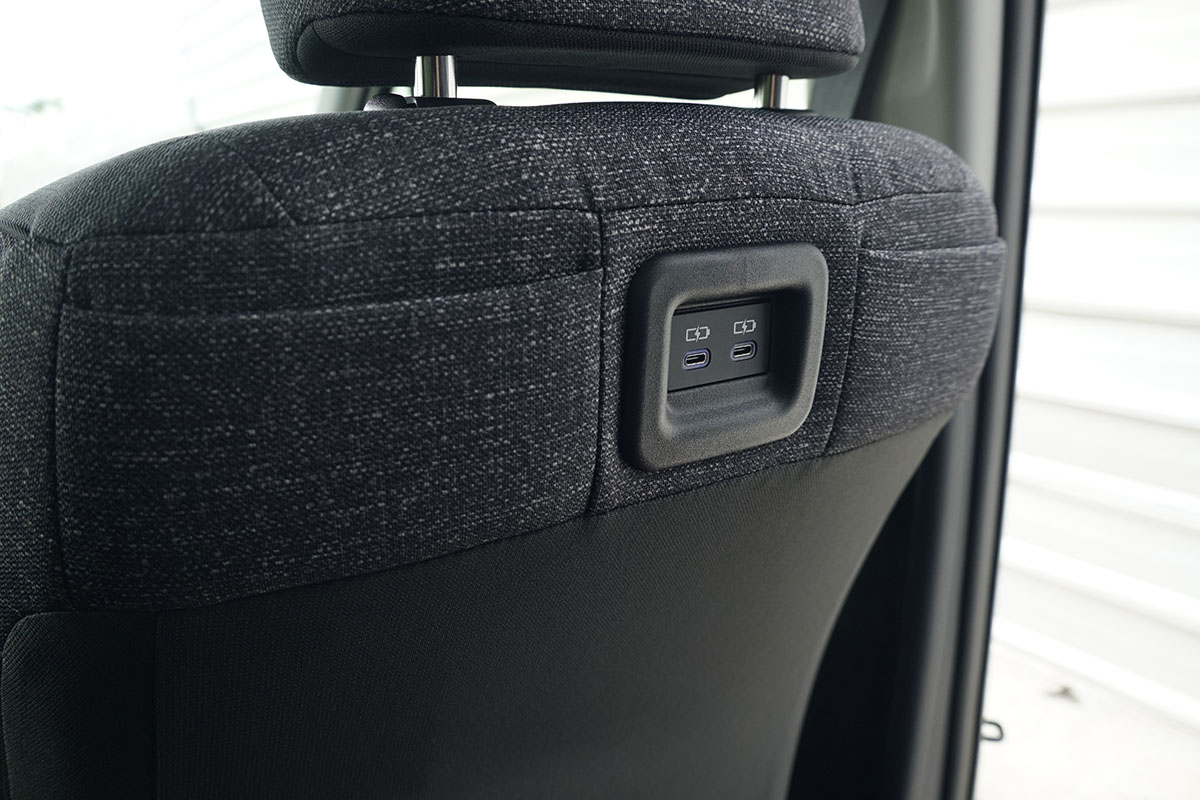
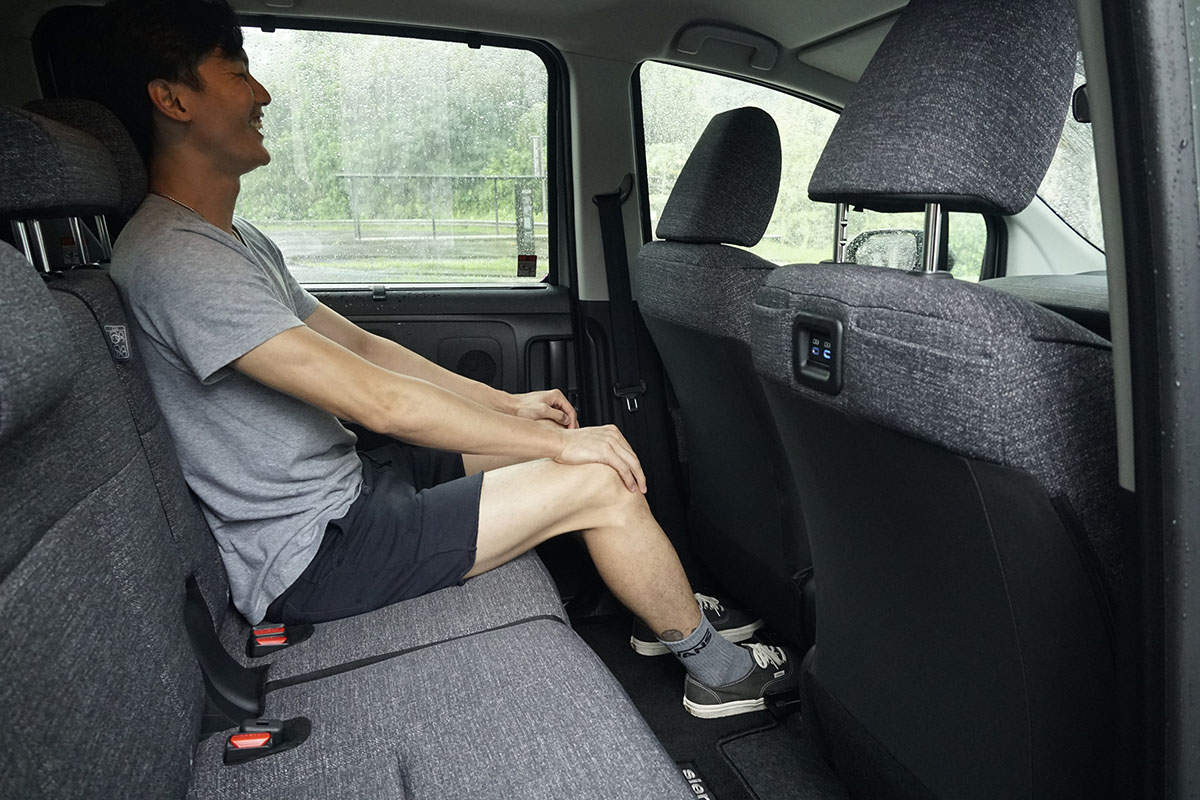
If you have a family of five, and need to carry two more on occasion, the Sienta is an excellent choice of small car. Sliding doors on both sides, and a generous aperture means it’s very easy to get into.
The second row is adjustable (fore/aft, and for seat angle), and can deliver ample room for two adults, three being squeezy. There’s a useful touch in the smartphone pocket and dual USB-C ports behind the driver’s seat.
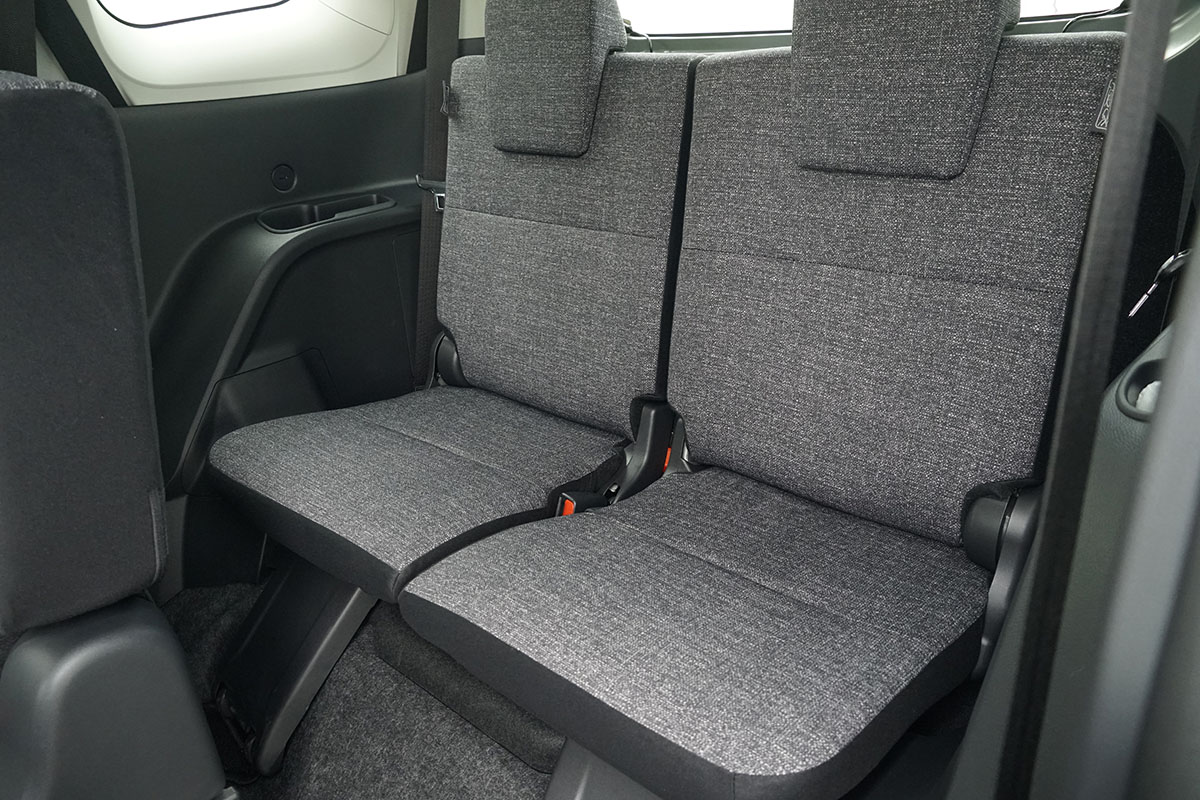
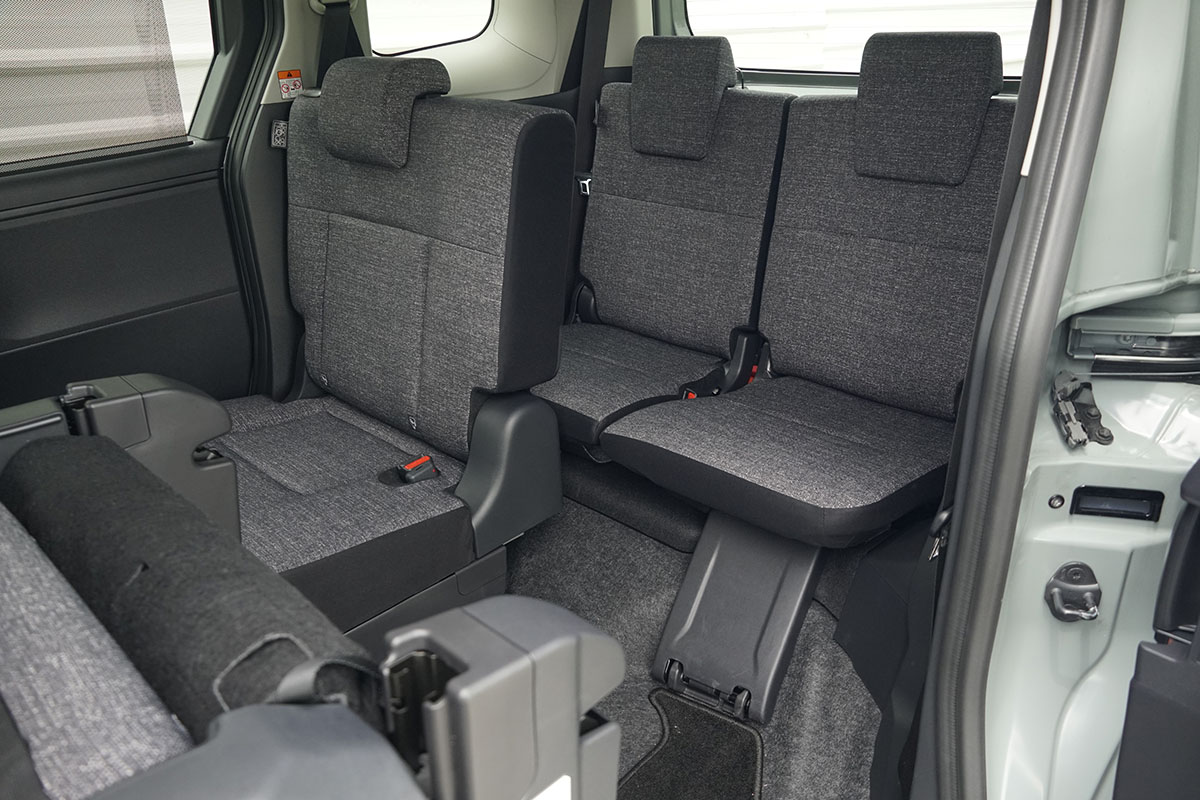
The third row is good, as far as small, seven-seat cars are concerned, and there’s more space there than a European small MPV like the Volkswagen Touran or first-get BMW 2 Series Active Tourer.
It means adults won’t be screaming for release after a half hour drive, at least. Entering the third row is easy too, with a single-action access moving the second row out of the way. All around, the generous headroom and tall windows help ward off claustrophobia.
Toyota does not quote a boot space figure in litres, but by our reckoning it has to be less than 100-litres with all seats in play, around 400-plus litres with the third row folded, and A Lot Of Space with all seats folded. The novel seat folding system means you can fold the third row almost flat, and the second row out of the way. Toyota says the car’s height means you can easily fit bicycles in this mode.
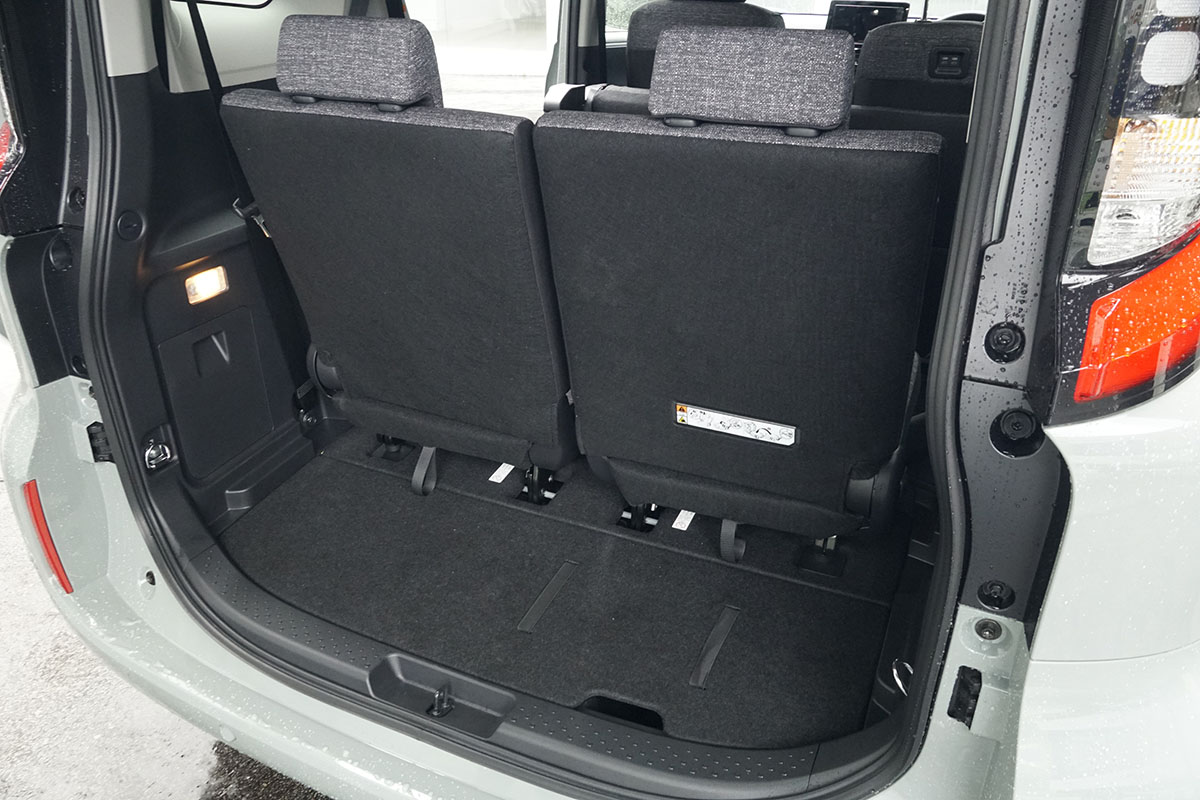
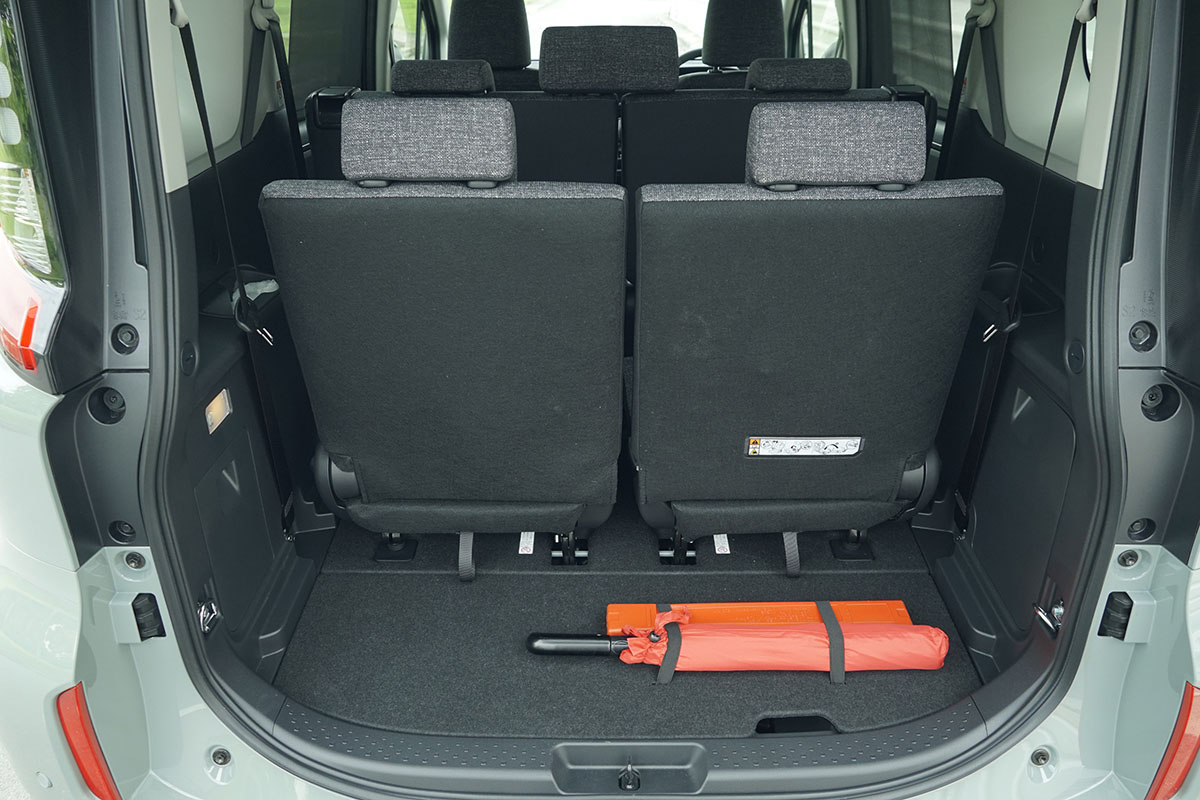
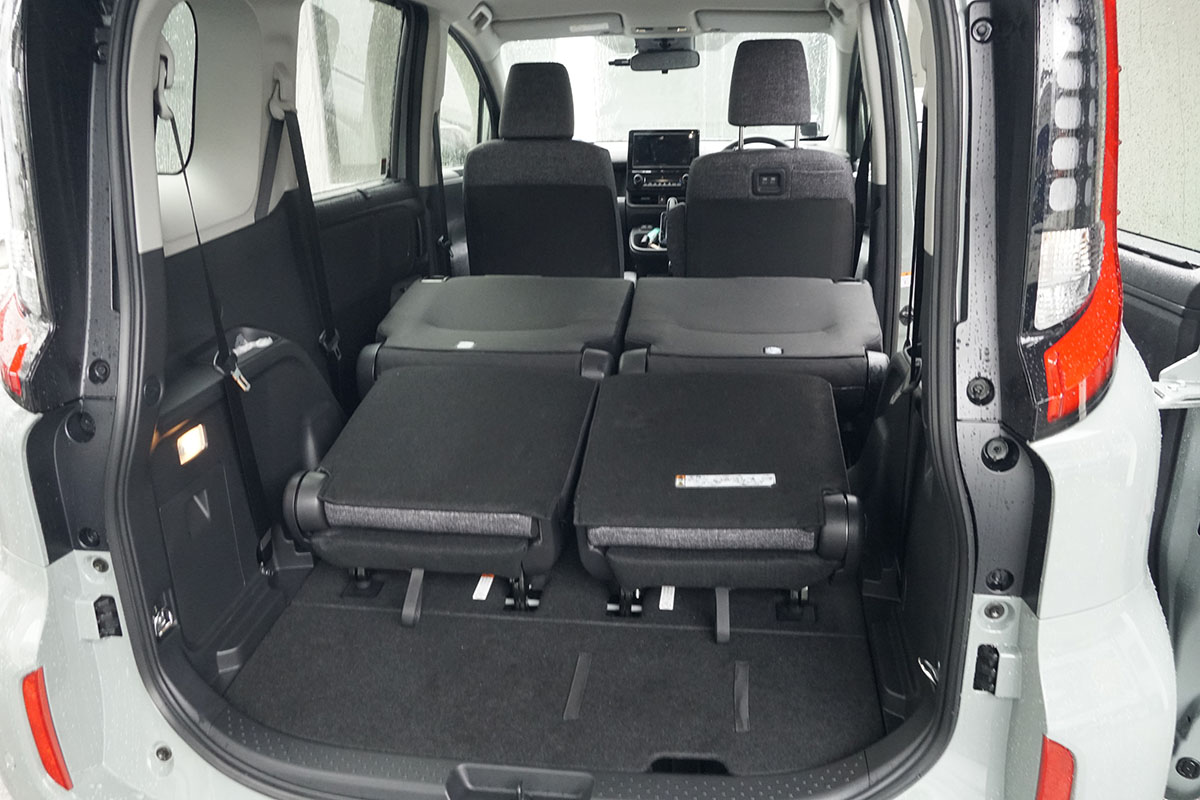
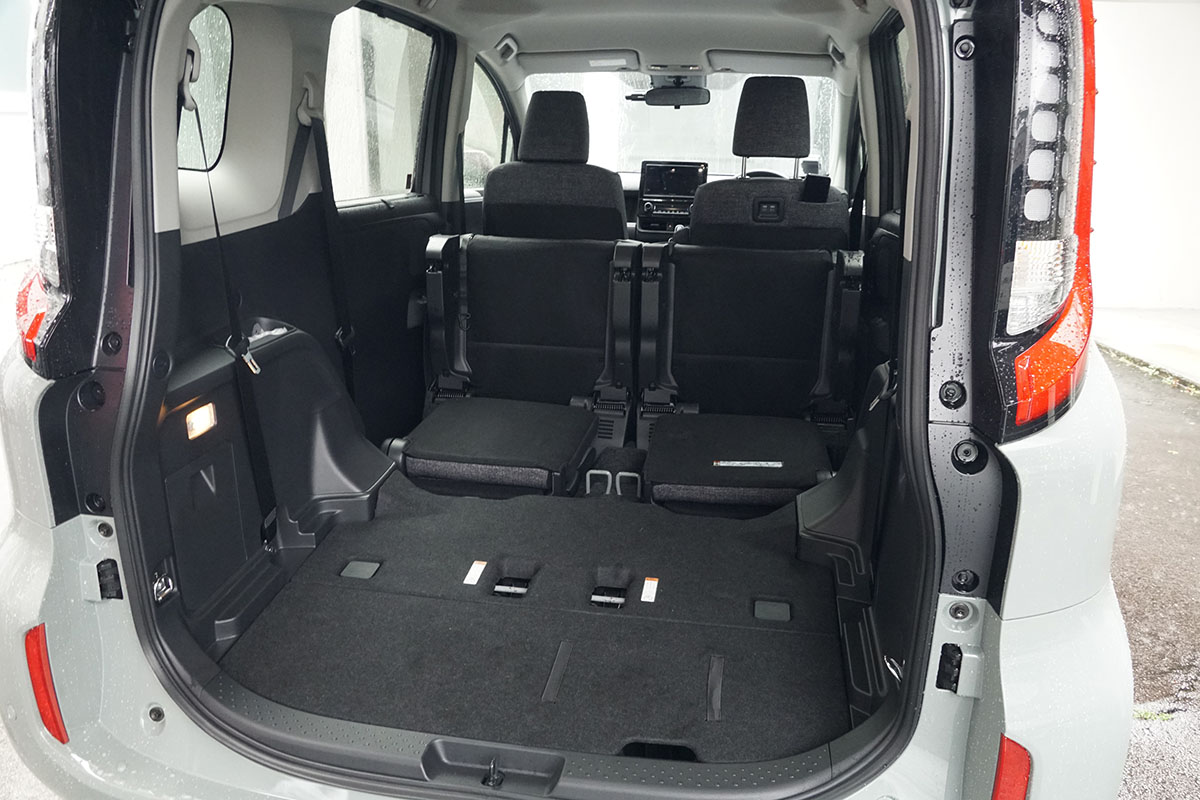
The number of dads I showed it to (three) all nodded in appreciation at the convenience features, the plentiful headroom which eases child tie-down or retrieval. Overall child-control is also easier, especially the ability for mom to make good on the ‘Don’t Make Me Come Back There’ threat at any given time.
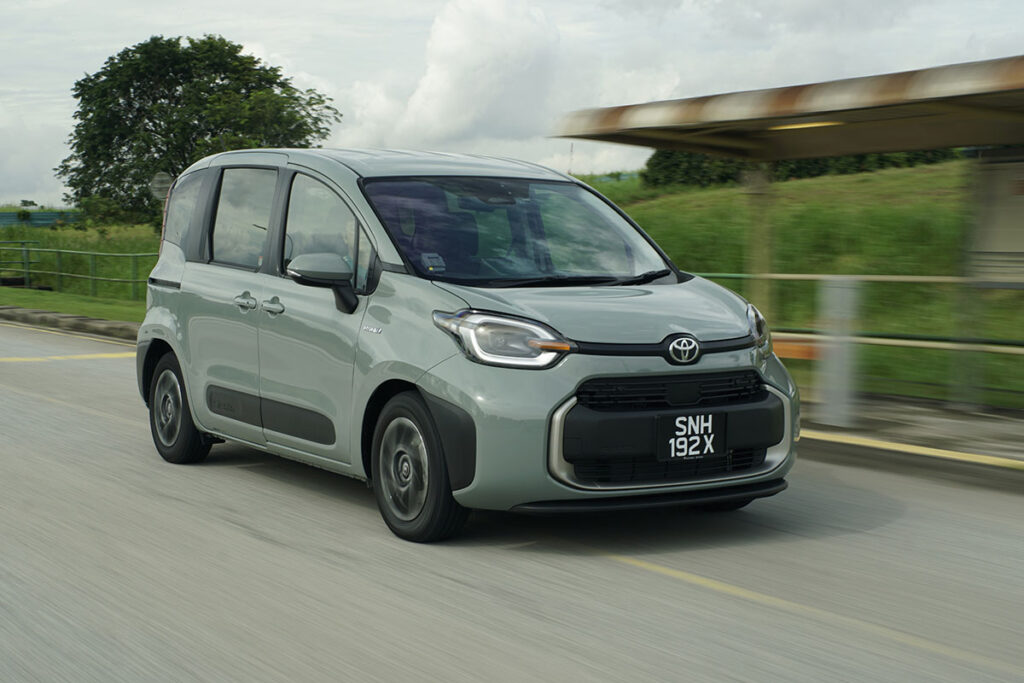
We’ve said a lot about Toyota’s hybrid drive tech in the past: It’s top of the game when it comes to efficiency, and gives cars impeccable town manners. The Sienta is no different, often operating entirely on electricity at low speeds, where it’s EV-like in its silence.
The engine kick-in is smooth and seamless, as expected, even though it’s the first time we’ve tested a Toyota hybrid with a three-cylinder engine. It’s a new power plant, part of Toyota’s latest ‘Dynamic Force’ series.
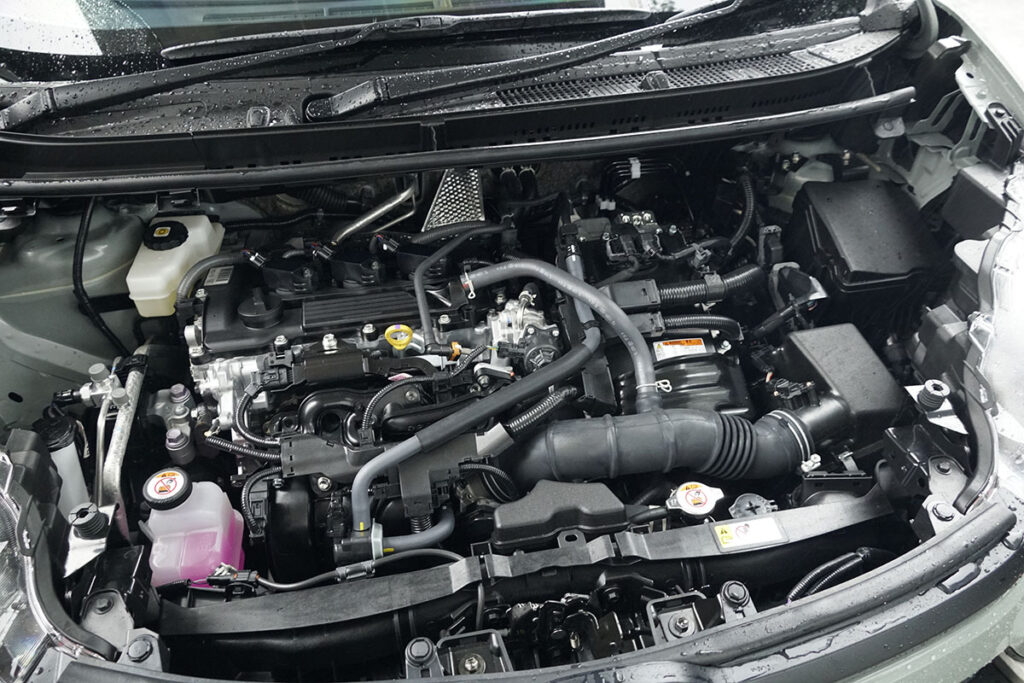
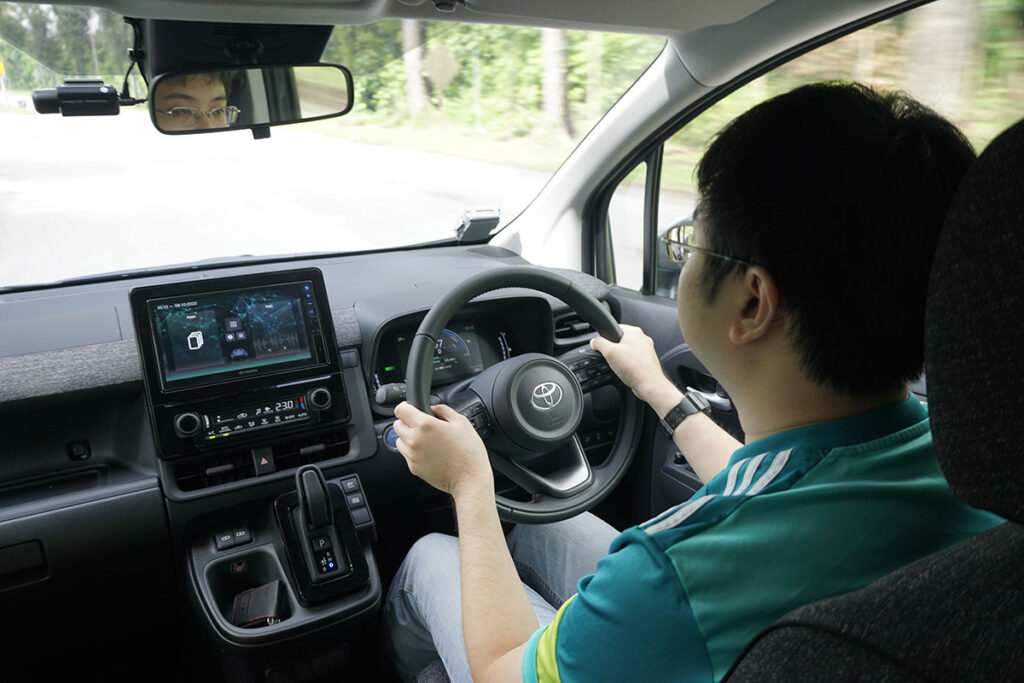
The important thing is that it has none of the roughness some triples have, though there are minor vibrations coming through the pedals, and like all small displacement engines it moans rather than sings at high revs.
Even more importantly, it’s a doggedly efficient powertrain. There are three drive modes (Eco, Normal, Power) but the beauty of a Toyota hybrid is that it can wring out the miles from petrol admirably, drive modes and driver type regardless.
On our regular commute (25km 20/80 town/highway) the car consistently delivered around 3.5L/100km. In total, the Sienta bore up 200km test with ease and returned 3.7L/100km. With the car’s 40-litre tank, that spells for 1,081km per tank. For a boxy and not particularly aerodynamic car, that’s also not fully run in, that is excellent fuel efficiency and proves Toyota is still king when it comes to petrol-electric power.
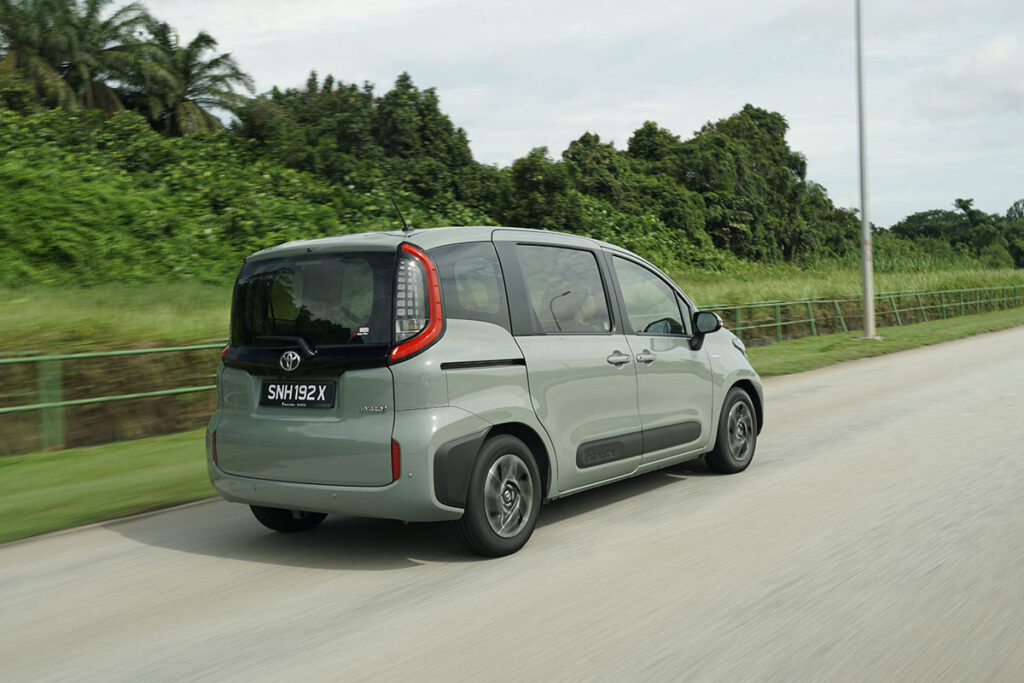
The tall stance and relaxed tuning means slight understeer is endemic, though it does bear up well to demands for more. Because of this, and the added electric torque, the Sienta is capable of surprising bursts of speed around town.
Town is where it excels, and it’s fine on Singapore’s highways, but above 90km/h is where the limitations start to show. As a small, tall MPV, there’s notably more wind and tyre noise the further you get from double digits. A Malaysian road trip in one is certainly possible, but you will have to take breaks for your ears.
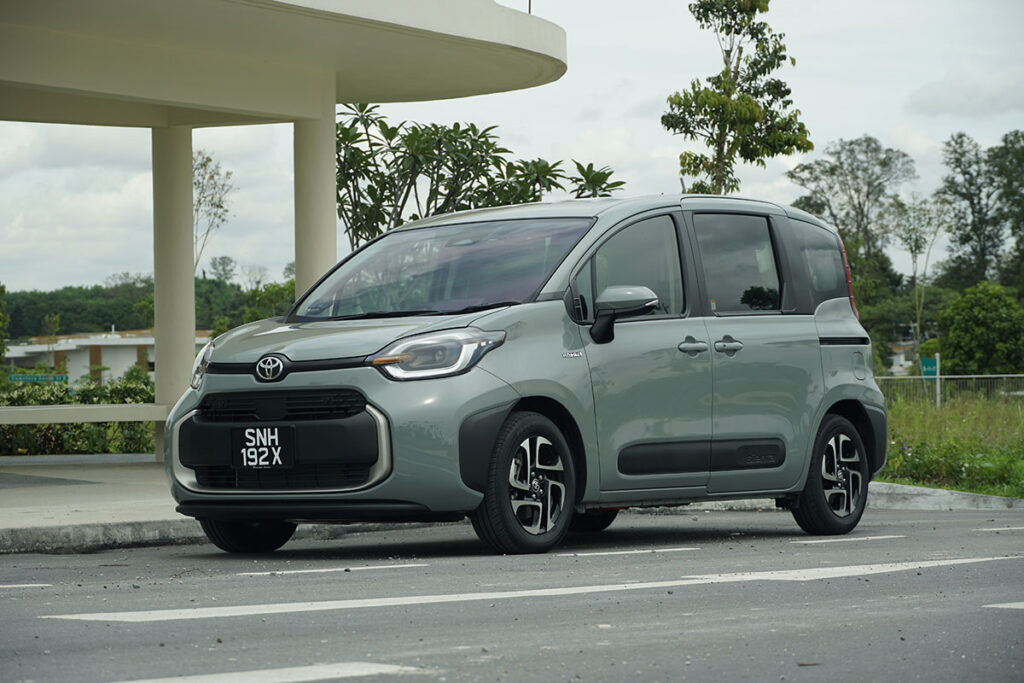
We don’t yet know the pricing of the base Standard model, but we do know what it won’t have. It’ll lack automatic lights, have less LED lighting (only the mainbeam), a powered door on the left-hand side only, leather to pleather, a more basic type of fabric on the interior and trim panels, and no USB-C charging for the second row.
It also has a conventional gear shifter (not shift-by-wire) and conventional instrument panel. Interestingly enough, while some premium car variants often ditch active safety, the Standard model will retain TSS – a good thing to note for cash-strapped MPV shoppers.
When it comes to direct competition, Toyota’s boast of it being the only Cat A hybrid small MPV around might sound awfully specific, but it does tick the 1. hybrid 2. Cat A and 3. small MPV boxes that mainstream buyers will look for. Honda’s Freed, as we reported, will make its full return to Singapore in 2023, and it’s also a small MPV with sliding doors, but crucially it isn’t a hybrid.
We’ve yet to test the Freed, but knowing Honda, it’ll be slightly less plasticky and nicer to drive, but less efficient. The first two are probably not huge deal-swingers for your Regular Small MPV Joe/Joanne.
Given the two cars are similarly priced, and the Sienta doesn’t cost that much more, there’s and plenty of reasons to go for the Sienta Hybrid, and almost no reason not to. Combining the space and practicality it always has had with hybrid efficiency, a nicer cabin, and improved HMI tech is why then the Sienta is a clear Small MPV MVP.
| Drivetrain type | Petrol-electric full hybrid |
| Engine | 1,490cc, inline 4 |
| Power | 91hp at 5500rpm |
| Torque | 120Nm at 4800rpm |
| Gearbox | CVT |
| Electric Motor | 79hp/141Nm |
| Battery | NiMh, 6.6kWh |
| System Power | 114hp |
| System Torque | Not stated |
| 0-100km/h | 12.5 seconds |
| Top Speed | 160km/h |
| Fuel Efficiency | 4.0 L/100km |
| VES Band | A2 / -S$15,000 |
| Agent | Borneo Motors |
| Price | S$150,800 with COE and VES |
| Availability | Now |
| Verdict | Efficient, spacious, easy to handle – one of the best small family cars for intra-Singapore use |